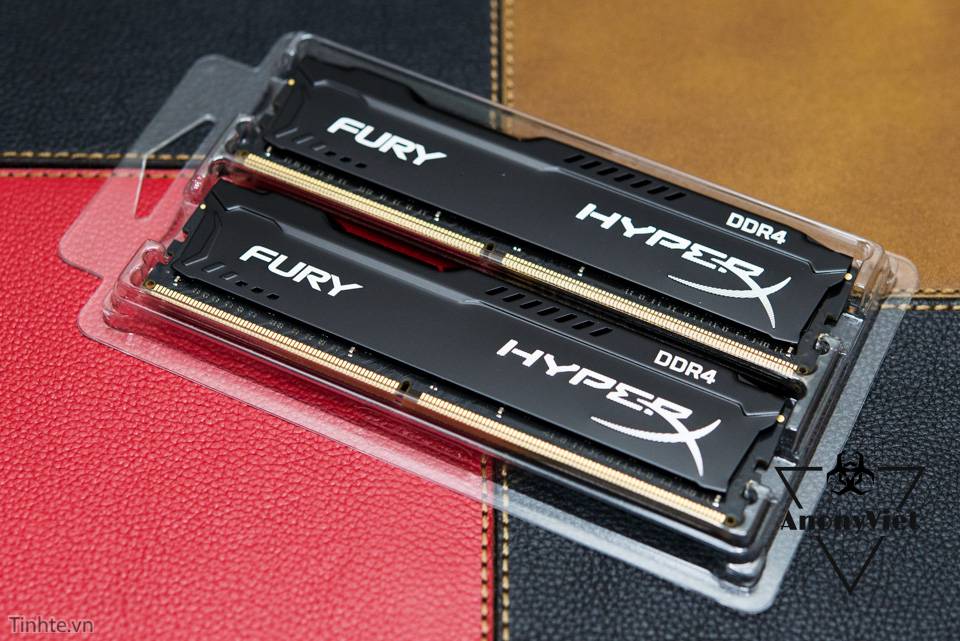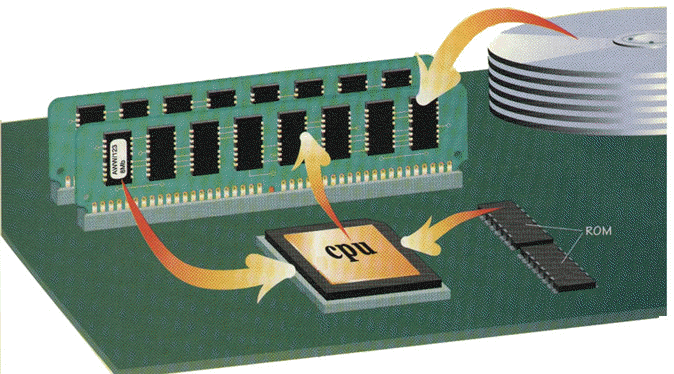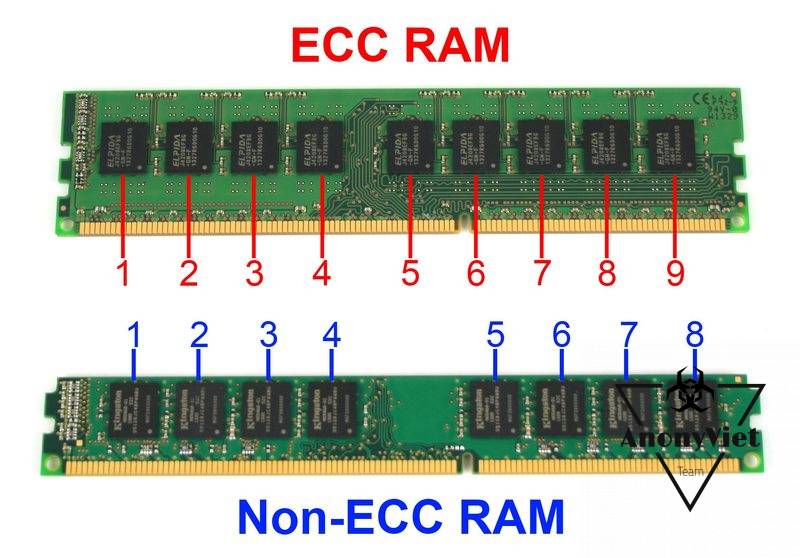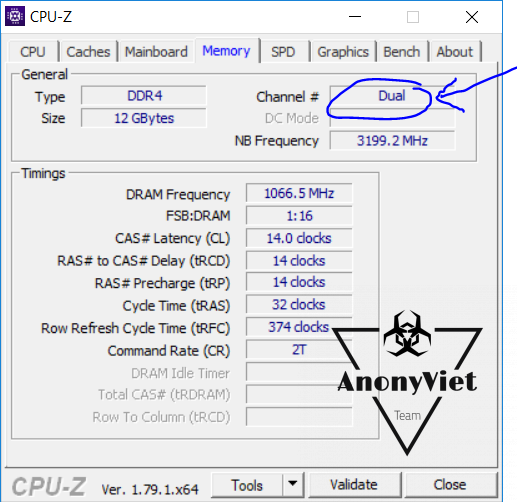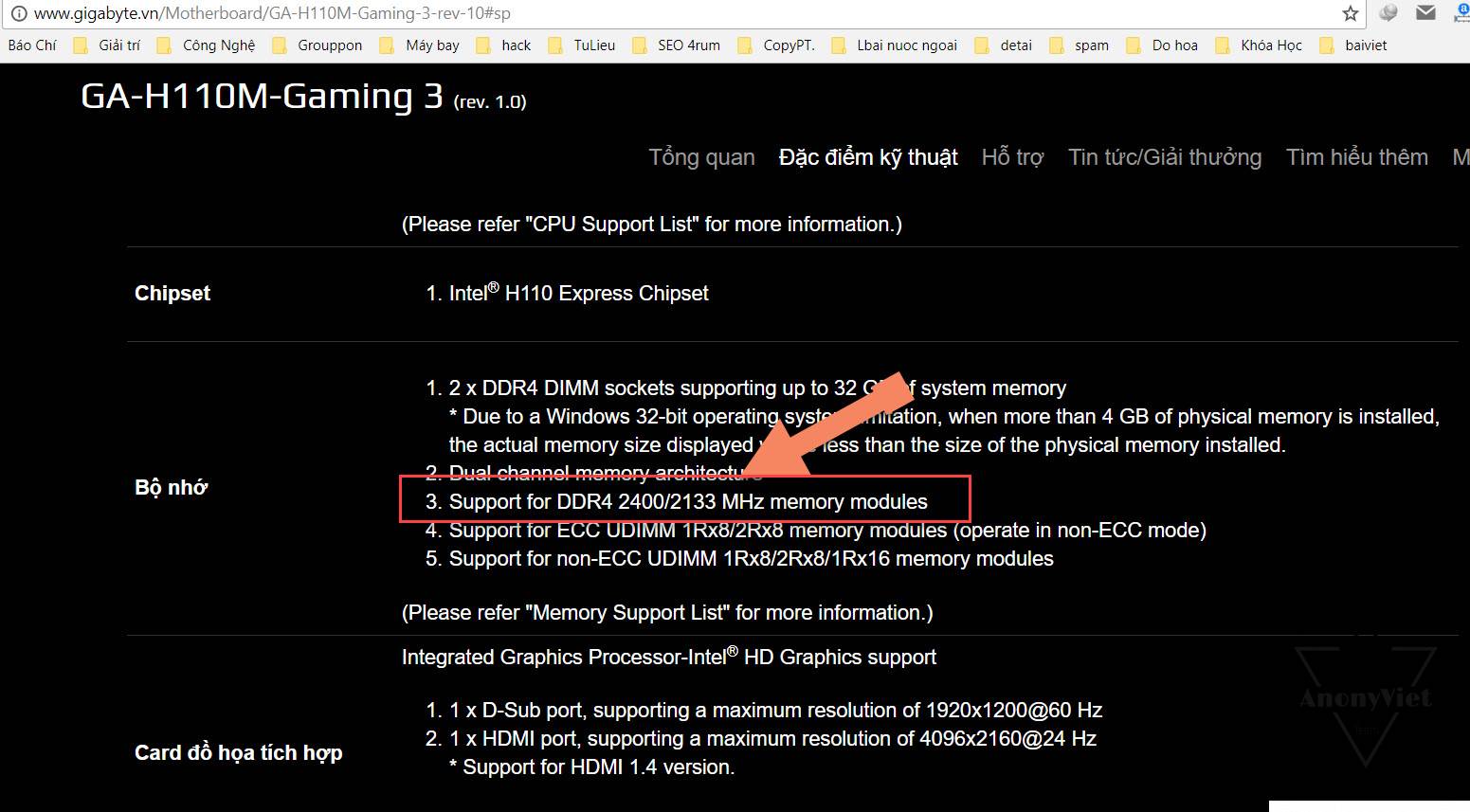Ram (Random Access Memory) is random access memory. Unlike sequential access. For example, there are 100 memory cells with addresses from 1 to 100. With sequential access, if you want to get data from the 99th memory cell, you need to access it sequentially from the 1st, 2nd, 3rd memory cells… ….until the 99th cell. But with the random access method, it is possible to immediately access the 99th memory cell without having to go through the previous memory cells. COMPUTER RAM AND THINGS YOU MUST KNOW, read the article below to better understand RAM
| Join the channel Telegram belong to AnonyViet 👉 Link 👈 |
SIMM RAM (Single In-Line Memory Module)
This is an early model and comes in two versions, either 30 pins or 72 pins. People often call it 30-pin SIMM or 72-pin SIMM. This type of RAM (with SIMM configuration) usually loads information every 8bits, then grows to 32bits. You also do not need to care much about how it works, if you go to the market you only need to identify the SIMM when it has 30 or 72 pins. The 72-pin SIMM type is 41/2″ wide while the 30-pin SIMM type is 31/2″ wide
DIMM RAM (Dual In-line Memory Modules)
Including the following types
- – SDRAM: 168 pin
- – DDRAM: 184 pin
- – DDRAM 2,3: 240 pin
- – DDRAM 4: 288 pin
Figure 168 PIN DIMM (SDRAM)
RIIM RAM (Rambus Inline Memory Modules)
Is the trade name of the Direct Rambus memory module type. The RIMM has the same shape as the DIMM module of conventional SDRAM and is capable of transmitting data 16-bits at a time. RIMM Connector: is the RIMM memory slot (RDRAM) on the Mainboard
COMPUTER RAM SPECIFICATIONS
The bus is the connection between the RAM and the controller, and a higher bus means that data can be transferred at a higher speed. When assembling computer components, you need to pay attention to the bus parameters that must match the Mainboard to run at the highest performance
* SDR SDRAM is classified according to bus speed as follows:
- o PC-66: 66 MHz bus.
- o PC-100: 100 MHz bus.
- o PC-133: 133 MHz bus.
* DDR SDRAM is classified according to bus speed and bandwidth as follows:
- o DDR-200: Also known as PC-1600. 100 MHz bus with 1600 MB/s bandwidth.
- o DDR-266: Also known as PC-2100. 133 MHz bus with 2100 MB/s bandwidth.
- o DDR-333: Also known as PC-2700. 166 MHz bus with 2667 MB/s bandwidth.
- o DDR-400: Also known as PC-3200. 200 MHz bus with 3200 MB/s bandwidth.
* DDR2 SDRAM is classified according to bus speed and bandwidth as follows:
- o DDR2-400: Also known as PC2-3200. 100 MHz clock, 200 MHz bus with 3200 MB/s bandwidth.
- o DDR2-533: Also known as PC2-4200. 133 MHz clock, 266 MHz bus with 4267 MB/s bandwidth.
- o DDR2-667: Also known as PC2-5300. 166 MHz clock, 333 MHz bus with 5333 MB/s bandwidth.
- o DDR2-800: Also known as PC2-6400. 200 MHz clock, 400 MHz bus with 6400 MB/s bandwidth.
- o DDR2-1066:
* DDR3 SDRAM is classified by bus speed and bandwidth as follows:
- o DDR3-1333:
- o DDR3-1600:
- o DDR3-1800:
- o DDR3-2000:
* DDR4 SDRAM is classified according to bus speed and bandwidth as follows:
- o DDR4-1600
- o DDR4-1866
- o DDR4-2133
- o DDR4-2400
- o DDR4-2666
- o DDR4-3200
- o DDR4-4266
RAM’S DUTIES
Ram is where the operating system and applications store data so that the CPU can quickly access it. Increasing the amount of RAM means reducing the number of times the CPU has to get data from the Hard Disk, a process that takes longer than reading data directly from RAM.
(RAM access time is calculated = nanoseconds, while HD access time is calculated = milliseconds)
Personal computers need a certain amount of RAM for each application, the more applications you open, the more RAM it needs. So what happens when RAM is full? Fortunately, our operating system is designed to handle this situation. When Ram is almost full, the operating system will remove part of the data from RAM and write it to the hard drive, usually the least used part. The HD part used to write this temporary data is called PAGE FILE or SWAP FILE which translates into Vietnamese as “Swap file”. Our RAM will therefore never be full but the cost will be is that the system works sluggishly because the CPU has to take too much data from the hard drive.
One question is why our computer is not a machine that only has RAM instead of the function of the hard drive because RAM has a very fast access speed. The reason is very simple that RAM loses data after shutdown and moreover, the cost of RAM is too expensive to use to store data up to hundreds of GB or even a few TB in today’s computers.
HOW TO CALCULATE THE BRANCH OF RAM
** In Single Channel mode
Only 1 BANK can be accessed at a time. Data Bus Width will be 64 bits. So:
BandWidth = Bus Speed * Bus Width/8 = Bus Speed * 64/8 = Bus Speed *8
(The reason for dividing 8 is because Bus width is in Bit units and BandWidth is in MB/s 1byte = 8 bits)
VD: With 1 stick of DDR-SDRAM 400 MHZ, BandWidth = 400 * 64/8 = 3200MB/s so people still have the PC3200 symbol
** In Dual Channel mode:
There will be 2 BANKs in 2 different DIMMs being accessed at the same time. At this time, each Bank will open a channel about Mem Controler. Each channel has a BandWidth of 64 bits so the total BandWidth of the entire system is 128 Bit.
At this moment BandWidth = Bus Speed * 128/8 = Bus Speed * 8
CONFIGURATION ON MEMORY CHIP ON RAM
- RAS (Row Address Strobe) is a signal to determine memory addresses in rows.
- CAS (Column Address Strobe) is a signal to determine the memory address by column.
- The Address Bus is the RAS and Cas signal transmission line.
- The Data Bus is the data link between the Memory Controller and the memory chip.
When needing access to any memory address, Memory Controller will send corresponding RAS and CAS signals to the memory chip corresponding to the data to be retrieved.
WHAT IS ECC AND NON ECC OF RAM?
ECC = Error Correcting Codeis Ram with bit error correction, ie instead of non-ecc ram having 64 bits, ram ecc will have 64 bits + 1bit ecc.
Ram ECC because after each read can check whether the read process has errors or not, should minimize the error of data exchanged through ram.
Normal ram can generate errors every few million tasks, with Ram ecc, that probability is much less, almost absolute accuracy.
Because the bandwidth requirements are quite special (65bits), only the main and CPU support can use ecc ram, besides, ecc production is more complicated and expensive than normal ram.
Ram ecc is often used in environments that require high accuracy and durability, so it appears in servers and mini computers, and PCs do not need to use ram ecc to do anything expensive.
PROVIDED DUAL CHENNEL ONLY INCREASES ON BAND WIDTH DOESN’T INCREASE BUS SPEED
With type DDR RAM – Double Data Rate (DDR, DDR2, DDR3)we can see the numbers 400Mhz, 533Mhz, 667Mhz, 800Mhz, 1066Mhz written on the product.
Call it speed Data Transfer Rateand its real bus speed is Bus Speed = Data Transfer Rated/2so DDR 400 will have Bus Speed = 200, DDR2 800 will have Bus Speed = 400, etc…
The next problem is that for Intel systems (especially using Intel chipsets), we always have a certain ratio between the real bus of the CPU and the real bus of RAM, called the divider.
In which, the CPU’s real bus = its nominal speed: multiplier or = FSB : 4 (because of Intel’s Quad Data Rate technology, we have such FSB).
So how to choose the right RAM? have to look at the real bus of CPU and RAM plus minimal divider to make sure to avoid bottleneck. That is the ratio CPU:RAM = 1:1 (ie CPU bus < or = RAM bus).
Therefore, if there is 1 CPU FSB 800Mhz, we choose the minimum RAM is DDR 400Mhz (both have Bus Speed = 200, ratio is 1:1).
In addition, choosing a higher RAM is not a waste, Chipset can run in other dividers like 2:3, 4:5…=> so we solve the first problem: choosing RAM with CPU does not have to rely and the calculation is like the above quote!
Second: What does Dual channel give us? Dual channel does not give us twice the bus speed (you can only increase the bus when Overclocking!), but double the bandwidth, thanks to the bus width being doubled.
We have the formula: Bandwidth = Data Transfer Rate x Bus Width = (Bus Speed x 2) x Bus Width
Bus of RAM or CPU…. is the operating frequency of RAM or CPU (in MHz).
Single Channel is a one-way street from CPU to RAM, then use that direction to transfer Data from RAM back to CPU. As simple as 1 second, Data runs from CPU to RAM, the next second runs from RAM to CPU.
Dual Channel It is also the same transmission line, but it has 2 directions: 1 way from CPU to RAM, 1 way from RAM to CPU. More simply, in 1 second Data runs from CPU to RAM and at the same time another Data runs from RAM to CPU also in that second remains at the constant speed of Bus Speed.
Only difference is it has 2 dimensions! That is, the width of the Bus (Bus width) is doubled, not the bus doubled.
A little more clarification is in:
- Single channelthe bus will have a width of 64bits = 8byteslive
- Dual channel To be 128bits = 16bytes.
Thus, Dual channel for bus width is doubled, resulting in Band width doubled (in theory) and Bus speed is unchanged, so Data Transfer Rate is also unchanged.
COMPARE DOUBLE DATA RATE WITH DUAL CHANNEL
For today’s computer RAM, and especially DDRAM, it will transport 2 pieces of data in a clock cycle called DOUBLE DATA RATE and its performance will increase 2 times compared to SDRAM only. transfer 1 piece of data in one clock cycle. And it has nothing to do with my 2 Rams running in Dual Channel configuration. To run in the DDR Dual Channel configuration, your main board must first support it and the ram bars must have the same speed, capacity and same type (DDR/DDR2/DDR3) and the same manufacturer (one is best). In some cases, not the same manufacturer can still run dual, but only a few).
CHECKING RAM IS DUAL CHANNEL running
For old motherboards, to run Dual Channel you need 2 or 4 ram bars of the same bus, same capacity.
However, with the 6th generation Mainboard, DDR4 RAM is no need to coincide the parameters you can still run Dual Channel
Specifically, I am using 1 stick of RAM 4GB bus 2133 and 1 stick of 8GB bus 2400, still dual as usual.
To check if your computer is running dual channel, download the software CPU-Z Go back and see in Tab Memory. See in box Channel #: Dual is OK, if Single, it will still run single channel
How to choose the right Ram to assemble the computer
First you need to identify motherboard What is your type, how much bus support. Then you have to choose the Ram that matches the bus specifications on the Mainboard.
I take for example:
My motherboard is Gigabyte H110M Gaming 3 (use CPU-Z Main tab to define), I will search Google this Main spec on the Gigabyte site to see what type this supports Bus how much
http://www.gigabyte.vn/Motherboard/GA-H110M-Gaming-3-rev-10#sp
As we can see in the picture below, this type of motherboard supports ram DDR4 bus 2400 or 2133
With such parameters, you can only install DDR4 RAM, install DDR3 or lower, the PC will not work. Now just take your ass to the store to buy the right type of Ram to install it.
Hope through the article COMPUTER RAM AND THINGS YOU MUST KNOW on AnonyViet will help you better understand the concepts as well as DD tasks of Ram, as a basis for you to upgrade or replace RAM for your beloved PC to help your PC run properly and bring the highest efficiency.




